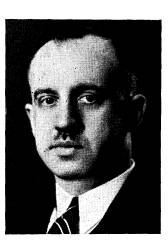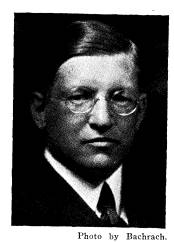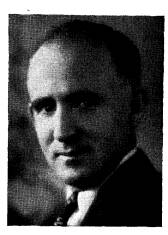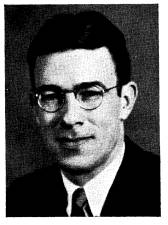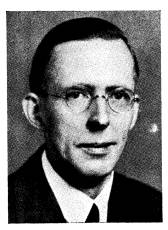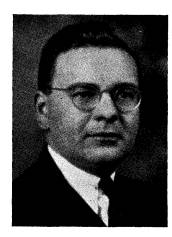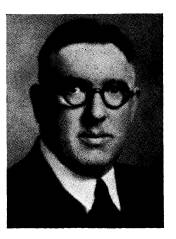Ohio History Journal
- 1
- 2
- 3
- 4
- 5
- 6
- 7
- 8
- 9
- 10
- 11
PROSPECTUS FOR A HISTORY OF THE STATE OF
OHIO
CARL WITTKE, Editor-in-Chief; EDITORIAL
COMMITTEE:
HARLOW LINDLEY, Chairman; CARL WITTKE;
WILLIAM T. UTTER.
An Announcement
Ohio has been strangely backward in the
preservation of her
historical material and in the writing
of her history. With the
exception of Roseboom and Weisenburger's
History of Ohio,
published in 1934, there is not a single
history of the state which
meets the standards of scientific and
critical historical scholarship,
covers the whole period of Ohio history
to the present time, and
properly subordinates local pride to
impartial scientific judgment.
Even this excellent volume has the
limitations to be expected of a
one-volume treatment, designed
essentially to meet the needs of
college students who use it as a
textbook.
The present enterprise, long discussed,
and at last likely to
come to fruition, is an attempt to do
for Ohio history what has
been done so well for other states,
notably New York and Illinois.
It is a plan to produce a six-volume
history of the state that
shall be so carefully conceived and so
thoroughly performed
that it will not be necessary, for many
decades, to do the job again,
Each volume has been assigned to a
scholar of reputation and
achievement, who is an expert in his
field. Several of the volumes
probably will be done cooperatively, so
as to enlist the contributions
of specialists in certain phases of the
work. Each volume will be
based upon a thorough exploration and
examination of all the
major sources, such as manuscript
collections, government
archives, and newspaper files to be
found not only in depositories
within the borders of the state, but
also in such well-known cen-
ters for Ohio materials as Madison,
Wisconsin, Ann Arbor, Mich-
igan, Washington, Philadelphia, and
elsewhere.
Attention will be given to the more or
less familiar aspects
of Ohio's political history, but, in
addition, the economic, social,
cultural and intellectual progress of
the state will be stressed as
249
250
OHIO ARCHAEOLOGICAL AND HISTORICAL QUARTERLY
well. The life of the people in all of
its ramifications, their art,
religion, journalism, the theater,
amusements, etc., is the theme of
the "new history" of our day,
and it is in accordance with these
standards that this enterprise is to be
carried through. While
every effort will be made to make the
volumes attractive and
readable, the major emphasis will be
given to producing an au-
thoritative, accurate, and complete
account of Ohio's development.
Finally, Ohio history cannot be written
in isolation from
national history. Ohio has affected
national affairs at many critical
junctures in the Nation's life, and
Ohio's history has been in turn
deeply affected by the broad currents of
national and international
affairs that have swept across the
Middle West. A history of
Ohio, if properly written, must be
properly related at all points
to the history of the American people as
a whole.
Needless to add, an undertaking
conceived in these broad
terms, to be carried out in accordance
with the most exacting
demands of modern historical
scholarship, and to be based upon
exhaustive research in sources to be
found in many depositories,
will require several years to complete.
The first volume may
be expected early in 1939, and other
volumes will appear in
fairly rapid order thereafter. To those
who may be disappointed
because the project cannot be completed
earlier, one can only
say that the undertaking is unique; it
constitutes genuine pioneer-
ing; and the job must be done with the
greatest care.
*
* * * *
Recognizing the need for a comprehensive
and authoritative
"History of Ohio," the
secretary of the Ohio State Archaeological
and Historical Society recommended to
the Board of Trustees
that the Society sponsor the preparation
and publication of a
"History of Ohio" in
connection with Ohio's observance of the
150th anniversary of the organization of
the Northwest Territory
and the establishment of civil
government within its limits under
the Ordinance of 1787. The trustees
authorized the secretary
to proceed in making plans for such a
project. Later a committee
consisting of the secretary of the
Society as chairman, Professor
Carl Wittke, then head of the Department
of History in the
Ohio State University, and Professor
William T. Utter, professor
of history in Denison University, was
appointed by the president
|
PROSPECTUS FOR A HISTORY OF OHIO 251 of the Ohio State Archaeological and Historical Society to make definitive plans for such a project and to draft a bill to be pre- sented to the General Assembly of Ohio. This bill, embodying the suggestions made by the Society's committee, was drafted by Mr. George B. Marshall of the Legis- lative Reference Bureau and was introduced in the Ohio General Assembly as Senate Bill No. 150, by Senator George M. Morris, and with slight amendments was passed April 29, 1937, and ap- proved by Governor Martin L. Davey, May 11, 1937. The Editorial Committee then called together a group of Ohio his- torians, who, having already carried on research in various phases of Ohio's history, were thus familiar with available materials, and organized a staff with one historian responsible for each of the periods to be covered in the six-volume work. The Staff |
|
CARL FREDERICK WITTKE:--(See last Who's Who in America.) Taught at Ohio State University, University of Iowa, University of Chicago, and University of West Virginia. Now professor of history and dean of the college, at Oberlin College. Lectured at a number of German universities. Honorary member Deutsche A k a d e m i e (Munich). Fellow Royal His- torical Society. Former member Social Science Research Council; Board of Editors Mississippi Valley Historical Review and Ca- |
|
|
|
nadian Historical Review. Member Council of American His- torical Association; Chairman American Historical Association Committee on Northwest Territory Celebration. Books:--A History of English Parliamentary Privilege; A History of Canada; Tambo and Bones--A History of the American Minstrel Stage; George Washington und Seine Zeit; and German-Ameri- cans and the World War. |
|
252 OHIO ARCHAEOLOGICAL AND HISTORICAL QUARTERLY |
|
|
|
BEVERLEY WAUGH BOND, JR.:-- (See last Who's Who in America.) Graduate of Randolph-Macon Col- lege and Johns Hopkins University. Taught at University of Mississippi; Southwestern Presbyterian Univer- sity; Purdue University; summer sessions at University of Wiscon- sin, Johns Hopkins University, Duke University, University of Michigan. Now professor of his- tory at University of Cincinnati. Fellow of Royal Historical Society; member of American Historical Association; Mississippi Valley |
|
Historical Association (president 1931-32); Historical and Philosophical Society of Ohio. Author of :--State Government in Maryland, 1777-1781; The Monroe Mission to France; The Quit-rent System in the American Colonies; The Correspondence of John Cleves Symmes; The Civilization of the Old Northwest. |
|
WILLIAM T. UTTER :--Graduate work University of Chicago, re- ceiving degrees of M. A. and Ph. D., his doctoral dissertation being, "Ohio Politics and Poli- ticians, 1803-1816." Instructor in history, Ohio State University, 1924-1927; taught at the University of Chattanooga, and Eureka Col- lege; since 1929, professor and chairman of the Department of History and Government at Den- ison University, Granville, Ohio. Author of three essays in early Ohio history: "Judicial Review |
|
|
|
in Early Ohio"; "St. Tammany in Ohio; A Study in Frontier Politics"; and "Ohio and the English Common Law"-- published in the Mississippi Valley Historical Review. An essay on the late Vernon Louis Parrington appeared in Marcus W. Jer- |
|
PROSPECTUS FOR A HISTORY OF OHIO 253 negan Essays in American Historiography (Chicago, 1937). Con tributor to The Dictionary of American Biography. FRANCIS PHELPS WEISENBURGER: |
|
--A.B., 1922, University of Mich- igan; M.A., Michigan, 1923; Ph.D., Michigan, 1929. Instructor in his- tory Defiance College, summers 1922-1924; assistant in history University of Michigan, 1923- 1924; Ohio State University since 1924; now associate professor of history, Ohio State University. Member American Historical As- sociation; Mississippi Valley His- torical Association; American As- sociation University Professors; Ohio State Archaeological and His- |
|
|
|
torical Society. Author of:--A History of Ohio (1934) with E. H. Rosenboom; "A Life of Charles Hammond" (1934); "A Life of John McLean" (1937). Contributor to:--Mississippi Valley Historical Review; Ohio Archaeological and Historical Quarterly; Dictionary of American Biography; Social Science Abstracts, and the forthcoming Dictionary of American History. |
|
|
|
EUGENE HOLLOWAY ROSEBOOM: --Attended Ohio State University, 191O-1916, receiving degrees of B.A. and M.A.; admitted to Phi Beta Kappa, 1914; graduate assist- ant, 1914-1915; University scholar. 1916-1917; teacher of history, Mt. Vernon (Ohio) High School, 1916- 1918; instructor in American his- tory, Ohio State University, 1919- 1921; Graduate scholar, Harvard University, 1921-1922; graduate as- sistant in history, 1922-1923; Ph.D., Harvard, 1932. Doctoral dissertation, "Ohio in the 1850's" |
|
(unpublished). Instructor in history, Ohio State University, 1923-1929; assistant professor 1929-1938; now associate profes- |
|
254 OHIO ARCHAEOLOGICAL AND HISTORICAL QUARTERLY sor. Author of:--"Ohio in the Election of 1824" (Master's thesis); A History of Ohio (with F. P. Weisenburger). Con- tributor to:--Dictionary of American Biography; the forthcoming Dictionary of American History; and Mississippi Valley Histori- cal Review (book reviews). Member American Historical Asso- ciation, Mississippi Valley Historical Association, Agricultural History Society, Ohio State Archaeological and Historical Society. |
|
|
|
PHILIP D. JORDAN:--Assistant pro- fessor of history, Miami Univer- sity. Held scholarships and assist- antships at Northwestern Univer- sity, where he was graduated in 1927, receiving the M.A. degree in 1928. Ph.D., State University of Iowa. Taught in several colleges and author of:--"The Letters of Eliab Parker Mackintire," and mono- graphs. Contributor to:--The Mis- sissippi Valley Historical Review; Iowa Journal of History and Poli- tics; Journal of the Illinois State Historical Society; Journal of Adult |
|
Education; Ohio Schools; American Literature; The Ohio Arch- aeological and Historical Quarterly; Bulletin of the New York Public Library; The Palimpsest; Annals of Iowa; The Quill, etc. |
|
HARLOW LINDLEY: -- (See last Who's Who in America.) Taught at Earlham College, Indiana State Uni- versity, Leland Stanford Jr. Uni- versity, and Ohio State University. Former librarian of Earlham Col- lege; director, Department of His- tory and Archives, Indiana State Library; secretary and director, In- diana Historical Commission; libra- rian, Hayes Memorial, Fremont, Ohio. Now secretary, editor and librarian of the Ohio State Archaeo- logical and Historical Society. For- mer fellow in history, University of |
|
|
|
PROSPECTUS FOR A HISTORY OF OHIO 255 Chicago. Former president of the Ohio Valley Historical Asso- ciation and the Mississippi Valley Historical Association. Author of a number of historical books, monographs and book reviews. Contributor to:--various historical periodicals; Dictionary of American Biography, and the Dictionary of American History. Member of the American Historical Association, the Mississippi Valley Historical Association, the American Library Association, the Society of American Archivists, the Ohio State Archaeo- logical and Historical Society, the Ohio Revolutionary Memorial Commission, and the Ohio Advisory Commission of the North- west Territory Celebration. Table of Contents VOLUME I THE FOUNDATIONS OF OHIO By BEVERLEY W. BOND, JR., Ph.D. |
|
Chapter I. The Physiography of Ohio. (This chapter will be pre- pared by Wilber Stout, D. Sc., state geologist and lec- turer-geologist, Ohio State University.) II. Animal and Plant Life in Ohio (By Edward S. Thomas, LL.B., curator of natural history, Ohio State Museum.) III. The Mound Builders. (This chapter will be prepared by Henry C. Shetrone, M.A., director, Ohio State Mu- seum.) |
|
IV. The Coming of the French. V. The English Advance. VI. The French versus the Eng- lish. VII. The English Triumph. VIII. The British in Control. IX. Ohio in the Revolution. X. Ohio under the Confederation. XI. Early Settlements (with spe- cial accent upon origin and types of settlers). XII. The Northwest Territory. XIII. The Indian Wars. XIV. Settlement in the Interior. XV. The State of Ohio Emerges. XVI. Ohio in 1803, Summary. |
|
256 OHIO
ARCHAEOLOGICAL AND HISTORICAL QUARTERLY VOLUME II THE FRONTIER STATE, 1803-1825 By WILLIAM T. UTTER, Ph.D. |
|
Introduction. Chapter I. The Land and the People. II. The Acquisition of Land. III. The Economics of Pioneering. IV. Travel and Transportation. V. Government and Politics (1803-1812). VI. The Background of the War of 1812. |
|
VII. The War of 1812. VIII. The Great Migration. IX. Education and Religion. X. Cultural Growth. XI. Social Life: Diversions. XII. Economic Survey of Ohio (1820). XIII. Ohio Politics (1812-1825). |
|
VOLUME III THE ERA OF INTERNAL IMPROVEMENTS, 1825-1851 By FRANCIS P. WEISENBURGER, Ph.D. |
|
Chapter I. The State and Its People (1825-1851). II. The Economic Basis. III. Cultural Institutions. IV. The Rise of Jacksonian De- mocracy. V. The Jacksonians at the Helm in Ohio. VI. Ohio during the Second Jack- son Administration. VII. The Rise of the Whig Party in Ohio. |
|
VIII. Ohio during the Van Buren Administration. IX. The Rise of the Anti-slavery Movement in Ohio. X. The
Sectional Controversy and the Mexican War. XI. The Rise of the Free Soil Party and the Election of 1848. XII. State
Politics during the 1840's. XIII. A New Constitution. |
|
PROSPECTUS FOR A HISTORY OF OHIO 257 VOLUME IV CIVIL WAR ERA, 1851-1873 By EUGENE H. ROSEBOOM, Ph.D. |
|
Chapter I. The Political Revolution (1850-1854). II. The Republican Party Emerges. III. Slavery and the Sectional Is- sue (1858-1861). IV. The Civil War Years: First Phase. V. The Civil War Years: Second Phase. VI. Post-bellum Politics. VII. Liberal Stirrings. |
|
VIII. A Changing Society (1850-70). IX. The Revolution in Transpor- tation. X. The Rise of Industrialism. XI. Banking and Finance. XII. The Agricultural Revolution. XIII. The Democratization of Edu- cation. XIV. Journalism and Journalists. XV. Culture in a Changing So- ciety. XVI. The New Ohio. |
|
VOLUME V OHIO: 1873-1900 By PHILIP D. JORDAN, Ph.D. |
|
Chapter I. Political Trends (1873- 1879). II. Politics in the 'Eighties. III. Era of the City Boss. IV. Agricultural Progress. V. Labor and Big Business. VI. Transportation and Commu- nication. |
|
VII. Rise of the Great Cities. VIII. The Progressive Movement. IX. The Gay 'Nineties. X. The Revival of Learning. XI. Literature and the Arts. XII. Growth of Science and Inven- tion. XIII. Summary. |
|
258 OHIO
ARCHAEOLOGICAL AND HISTORICAL QUARTERLY VOLUME VI OHIO IN THE TWENTIETH CENTURY Edited by HARLOW LINDLEY, Litt.D. (Tentative Outline) |
|
Chapter I. The Growth of Education. II. Journalism and Literature. III. Art and Music. IV. Scientific Development. V. Manufacturing, Trade and Transportation. VI. Agricultural Changes. VII. The Government--Constitu- tional Revision.--Growth of Administrative
Service.-- Judiciary.--Parties & Poli- tics. |
|
VIII. Taxation and Finance. IX. Labor Problems and Progress. X. Conservation. XI. The Church in the Twentieth Century. XII. Ohio in the World War. XIII. Depression Activities. XIV. The
Sesqui-centennial Cele- bration
and Its Signifi- cance. Bibliography. General Index. |
|
This volume will be presented in monograph form, each
chapter being prepared by a specialist in that field. Among the
contributors will be Professor John L. Clifton, Department of Education,
Ohio State University; Professor James E. Pollard, Department of Journalism,
Ohio State Uni- versity; Professor Harlan H. Hatcher, Department of
English, Ohio State University; Mr. J. Otis Garber, deputy administrator,
W. P. A. in Ohio; Professor Francis R. Aumann, Department of Political
Science, Ohio State University; Professor Henry C. Hubbart, Department of
History, Ohio Wesleyan University; Professor Benjamin H. Pershing,
Department of History, Wittenberg College; Mrs. Raymond C. Osburn,
Columbus; Mrs. J. E. Clark, Columbus. Method of Distribution The Act of the General Assembly of Ohio authorizing
the publication of this history provides that one set
shall be furnished free of charge to each certified public library and
to each duly recognized college, university and high school in the
state of Ohio. The Ohio State Archaeological and Historical Society
may also arrange for the exchange of said "History of
Ohio" for publica- tion of similar supported societies, associations or
organizations in other states and countries. The remaining sets may be
sold to the public at proportional cost of publication as
determined by the Ohio State Archaeological and Historical Society. |
PROSPECTUS FOR A HISTORY OF OHIO 259
The volumes will be in uniform library
buckram binding,
pages 6 1/4 inches by 9 inches. Maps,
illustrations and bibli-
ographies will accompany each volume and
the work will be com-
pletely indexed. Each volume will
contain 350 to 450 pages. Sets
will be available for purchase at an
estimated price of $25.00
complete. Orders should be placed with
the Secretary of the
Ohio State Archaeological and Historical
Society, Ohio State
Museum, Columbus, Ohio.
PROSPECTUS FOR A HISTORY OF THE STATE OF
OHIO
CARL WITTKE, Editor-in-Chief; EDITORIAL
COMMITTEE:
HARLOW LINDLEY, Chairman; CARL WITTKE;
WILLIAM T. UTTER.
An Announcement
Ohio has been strangely backward in the
preservation of her
historical material and in the writing
of her history. With the
exception of Roseboom and Weisenburger's
History of Ohio,
published in 1934, there is not a single
history of the state which
meets the standards of scientific and
critical historical scholarship,
covers the whole period of Ohio history
to the present time, and
properly subordinates local pride to
impartial scientific judgment.
Even this excellent volume has the
limitations to be expected of a
one-volume treatment, designed
essentially to meet the needs of
college students who use it as a
textbook.
The present enterprise, long discussed,
and at last likely to
come to fruition, is an attempt to do
for Ohio history what has
been done so well for other states,
notably New York and Illinois.
It is a plan to produce a six-volume
history of the state that
shall be so carefully conceived and so
thoroughly performed
that it will not be necessary, for many
decades, to do the job again,
Each volume has been assigned to a
scholar of reputation and
achievement, who is an expert in his
field. Several of the volumes
probably will be done cooperatively, so
as to enlist the contributions
of specialists in certain phases of the
work. Each volume will be
based upon a thorough exploration and
examination of all the
major sources, such as manuscript
collections, government
archives, and newspaper files to be
found not only in depositories
within the borders of the state, but
also in such well-known cen-
ters for Ohio materials as Madison,
Wisconsin, Ann Arbor, Mich-
igan, Washington, Philadelphia, and
elsewhere.
Attention will be given to the more or
less familiar aspects
of Ohio's political history, but, in
addition, the economic, social,
cultural and intellectual progress of
the state will be stressed as
249
(614) 297-2300
